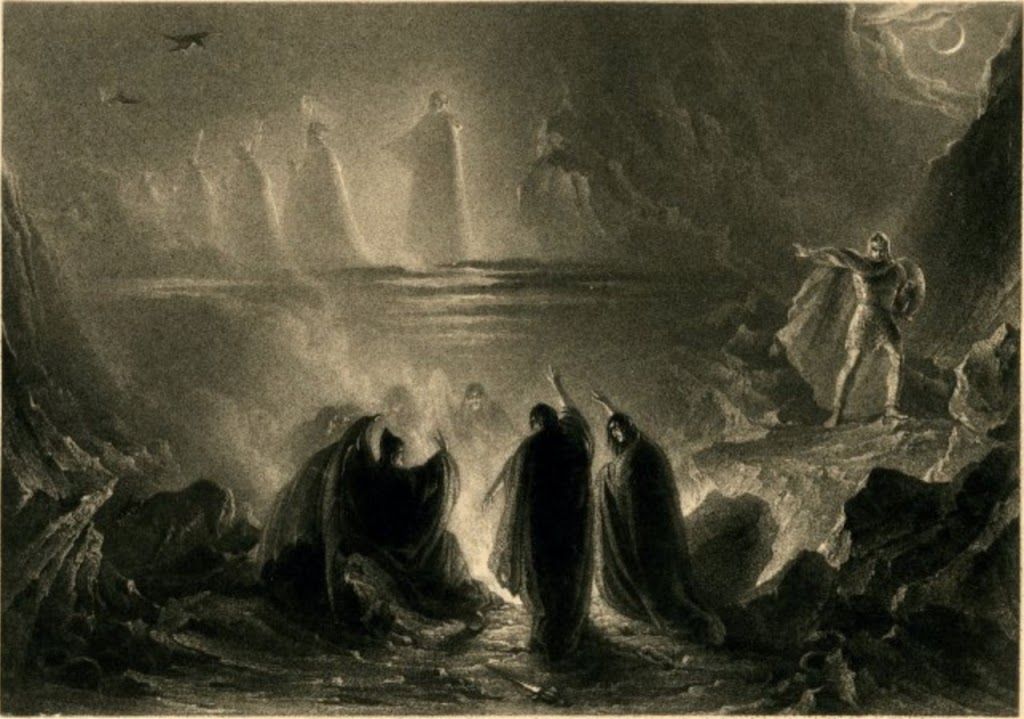Over the next several weeks, I’ve decided to work smarter, not harder, and when I say smarter, I mean my thesis that received a distinction (basically just an A+, but I did my master’s in London, so it has to sound fancier there). All bragging aside, this is a blog that takes time out of my work week to write. And since I already have a long piece of writing of which I’m very proud, I thought I would just rework that into a series of blog posts to tell people what I spent a full year and half a pandemic obsessively researching, writing, and belaboring. It may be super boring to anyone who isn’t me, but both my advisor and I really liked it. So I’m going to share it. Deal with it. I suppose it all started with Linda Hutcheon. Well, it didn’t, but she did take over once I found and devoured her book, A Theory of Adaptation. Friends, join me for a journey in which I do a very deep dive on these texts, some of which are quite famous, and some of which nobody has ever heard of and you have to look really hard to find a digital copy of. It’s time to rant about palimpsests.
Linda Hutcheon (a BAMF) describes the act of adaptation as “repetition without replication.”[1] This also inherently describes translation. Translation and adaptation are both generally considered derivative works under copyright law, but translation is often characterized as supposedly faithful and adaptation usually implies some change either in form or content. Both, however, use old material to create a new work, or as Hutcheon writes, “adaptation is always a double process of interpreting then creating something new,”[2] which echoes Gérard Genette’s view of translation: “The wisest thing for the translator would no doubt be to admit that he can only do badly, and to force himself nevertheless to do as well as he can, which often means doing something different.”[3] In my master’s thesis, I applied their adaptation framework to three versions of Shakespeare’s Macbeth. I chose the versions because they exemplify the translation types laid out by Roman Jakobson in a 1959 essay called “On Linguistic Aspects of Translation.” The types are: “Intralingual translation or rewording, an interpretation of verbal signs by means of other signs of the same language; Interlingual translation or translation proper, an interpretation of verbal signs by means of some other language; and Intersemiotic translation or transmutation, an interpretation of verbal signs by means of signs of nonverbal sign systems.”[4] Sounds very fancy, but basically it’s a question of changing the language (i.e. English to Spanish), changing the wording (i.e., Early modern English to Contemporary English), or changing the communication method (i.e., words to dancing).
The texts I chose are doubly adaptive because Shakespeare’s Macbeth is itself an adaptation of Scottish history and Holinshed’s Chronicles. It kind of forces us to ask if anything is every truly original. It’s tempting to say no, everything is part of a long-standing literary tradition that feeds off of itself. I prefer to think that everything is original even if it’s all just a twist on a classic tale. I was reading Zadie Smith’s On Beauty this week and actually scared my roommate when I gasped loudly at the realization that it’s loosely based on Howards End by E.M. Forster. For all that, it’s still a totally different book. But knowing that it owes some of its conception to Howards End opens up a world of associations that will color my reading of it. I cannot help but approach the book through the lens of Forster, and it will deepen my understanding of it and add layers that wouldn’t be there had I not read Howards End first. This has been a tangent, but it does segue really nicely into my next point, which is about palimpsests. The term originally describes “a manuscript in which a later writing is written over an effaced earlier writing.”[5]
Basically a text that’s written on the same pages as a previous text that has disappeared and/or been erased. I am obsessed with this concept. So was Genette, who used the idea in the title of his book, Palimpsests: Literature in the Second Degree (originally written in French and translated by Channa Newman and Claude Doubinsky, #namethetranslator). In this book, Genette categorizes the various relationships between a source text and its derivations. Hutcheon (whom I love and will continue to reference throughout this series) also uses the idea of a palimpsest to describe adaptation. Genette and Hutcheon’s palimpsests are not so much physical objects as works that metaphorically contain two texts in one, both invisible source and visible target, adapted text and adaptation. Genette lists hundreds of possible changes between source and target, though often new works are the result of a combination of these transformations. Translation is among them: “The most visible form of transposition, and certainly the most widespread, consists in transposing a text from one language to another.”[6] Genette’s acknowledgement that translation can exist alongside other transformations encourages a view of translated works as creative and interpretive endeavors. It also refocuses a translation discussion away from faithfulness (or lack thereof) and allows us to celebrate textual shifts that are not the result of a change in language, but rather the creative choices of a ranslator/author. If we ignore these creative changes, or simply label them as unfaithful translations, we deny the translator’s agency and fail to acknowledge their creative contribution to a work.
But I was interested, too, in how audiences interact with these works. Hutcheon writes that, “we experience adaptations (as adaptations) as palimpsests through our memory of other works that resonate through repetition with variation.”[7] Consequently, adaptations offer, “the comfort of ritual combined with the piquancy of surprise.”[8] We enjoy watching a new twist on a familiar tale or a remembered story with renewed suspense. But Hutcheon offers a caveat: adaptational intertextuality is only present “if the receiver is acquainted with the adapted text.”[9] For this reason, she draws a distinction between knowing and unknowing audiences. Knowing audiences are familiar with the source while unknowing audiences view the work as a stand-alone text. I’m a knowing audience reading On Beauty through the lens of Howards End, but it’s just as likely that someone will read On Beauty without having read Forster, and miss the connection (which, I want to stress now, is totally okay and completely valid). Unknowing audiences will not experience the text in the same way because, “adaptation [viewed] as adaptation involves, for its knowing audience, an interpretive doubling, a conceptual flipping back and forth between the work we know and the work we are experiencing.”[10] She labels this phenomenon, only present for the knowing audience, palimpsestic doubleness.”[11] And that was the main theme of my paper: how does palimpsestic doubleness shape the reception of these different translations of Macbeth? This led to its punny title: “Palimpsestic Double, Toil and Trouble: The Intersection of Translation, Text, and Audience in Adaptations of Macbeth.”
I should point out here that I am, in addition to a document translator, also a subtitle translator. This is relevant because I want to bring up a concept from the world of theatre/subtitling, which is Egil Törnqvist’s gossiping effect. It’s generally applied to audiovisual translation, which is why I first encountered it in my subtitling textbook: While a translated novel or poem, or a dubbed programme, often obscures the original linguistic material, subtitles find themselves in the difficult position of being constantly accompanied by the film dialogue, giving rise to what in the professional world is known as the ‘gossiping effect’ or ‘feedback effect.’[12] The gossiping effect allows for the constant comparison of source and target, resulting in a game of spot the difference. I somewhat disagree with Díaz Cintas and Remael that it’s absent from the other types of translation, though, ven if you don’t get the original text at the same time (I won’t get started on bilingual editions of translations). I think that Hutcheon’s “conceptual flipping back and forth between the work we know and the work we are experiencing”[13] is basically ust the gossiping effect, and it’s made possible by palimpsestic doubleness. While you don’t get that simultaneous presentation, like with subtitles, a knowing spectator’s memory of the source will be on their mind while viewing the target. The resulting game of spot the difference highlights what has been changed from the source text. I believe that these changes are especially significance because they are a deliberate departure from the source. And knowing audiences can’t help but view the adaptation/translation this way.
I do have to point out that Hutcheon’s conception of a knowing audience is inherently complicated by interlinguistic (between different languages) translation. I’ve read Tolstoy in translation, but I don’t read Russian, so I can’t be constantly mentally comparing the translation to the source. A knowing audience for translations would need to be someone who speaks both languages and chooses to read it in both, and, apart from someone like me doing a thesis on it, that’s not a super likely reality. Because of that, translated works can’t necessarily rely on palimpsestic doubleness in the same way that a non-interlinguistically translated adaptation might. For the purposes of my paper, however, I assumed that such an audience did exist for the first of my primary texts, an interlingual (English to Castilian Spanish) translation: León Felipe’s 1954 Macbeth o el asesino del sueño [Macbeth or the murderer of sleep].[14] As for my other texts, we have the intralingual (English to English): Billy Morrissette’s 2001 film Scotland, PA.[15] And finally, the intersemiotic (dialogue to dance): Punchdrunk theatre company’s production, Sleep No More.[16] All are translations as defined by Jakobson and adaptations as defined by Hutcheon.
In the next installment I’ll look at Felipe’s translation, and show you how I went about answering questions like how does a knowing audience benefit from their prior knowledge? How does a text’s palimpsestic doubleness/gossiping effect shape its meaning? How do creators embrace or reject this effect within different translation – and media – types? Until next time. Or keep going now.
[1] Linda Hutcheon, A Theory of Adaptation (New York: Routledge, 2006), 173.
[2]Ibid., 20.
[3] Gérard Genette, Palimpsests: Literature in the Second Degree, trans. Channa Newman and Claude Doubinsky (Lincoln: University of Nebraska Press, 1997), 217 (all emphasis in quotations original, unless specified).
[4] Roman Jakobson, “On Linguistic Aspects of Translation,” in The Translation Studies Reader, ed. Lawrence Venuti (London: Routledge, 2012), 138.
[5] OED Online, “Palimpsest” (Oxford University Press, 2020).
[6] Genette, Palimpsests, 214.
[7] Hutcheon, A Theory of Adaptation, 8.
[8] Ibid., 4.
[9] Ibid., 21.
[10] Ibid., 139.
[11] Ibid., 120 and 127.
[12] Jorge Díaz Cintas and Aline Remael, Audiovisual Translation: Subtitling (New York: Routledge, 2014), 55.
[13] Hutcheon, A Theory of Adaptation, 139.
[14] León Felipe, Macbeth o el asesino del sueño: parafrásis de la tragedia de Shakespeare (Madrid: Visor Libros, 1954). All back translations of Castilian-language Macbeths my own.
[15] Billy Morrissette, Scotland, PA (USA: Lot 47 Films, 2001).
[16] Sleep No More, dir. Felix Barrett and Maxine Doyle, Punchdrunk (McKittrick Hotel, New York City, 2011).
Photo: Nixon, J.H. (painter), Phillips, G.H. (engraver), Kendrick, J. (publisher). (1831). Proof Illustration to Shakespeare’s ‘Macbeth’. Print, https://www.britishmuseum.org/collection/object/P_1868-0822-2028.

